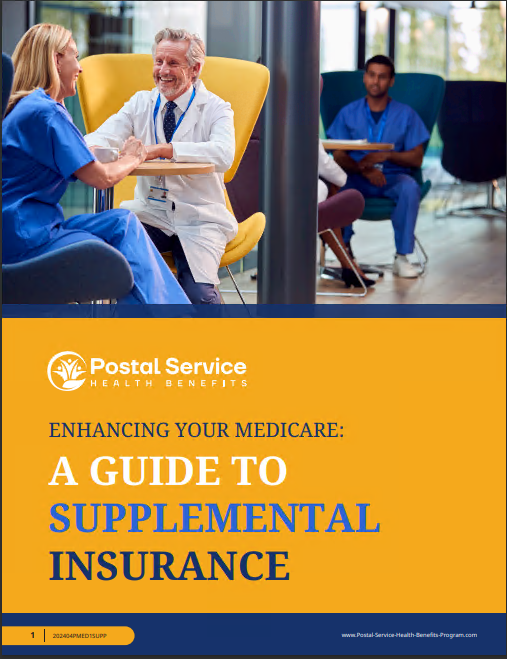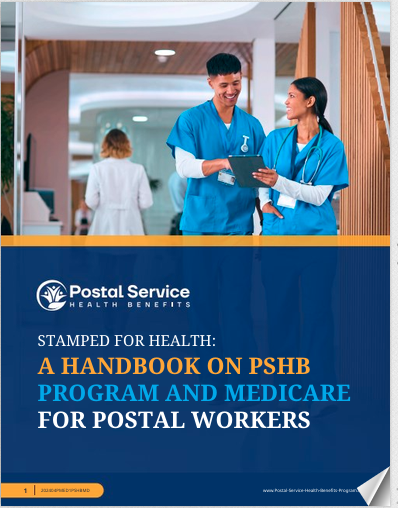Key Takeaways:
- The Postal Service Health Benefits (PSHB) program introduces significant changes to family health coverage for postal employees, ensuring better integration with Medicare for retirees and offering a range of plan options for employees and their loved ones.
- Understanding new eligibility rules and plan selection options under the PSHB will help postal employees make informed decisions about family coverage starting in 2025.
Family Health Plans Under PSHB: Here’s What Changes for Your Loved Ones
The Postal Service Health Benefits (PSHB) program, set to take effect in 2025, will introduce a new era of health coverage for postal employees and their families. With this program, families of USPS employees can expect changes in how health plans are structured, the types of coverage available, and the process for enrolling dependents. This shift is part of the broader Postal Service Reform Act of 2022, designed to ensure more focused health care options for USPS employees, retirees, and their dependents.
As we approach 2025, it’s important for postal employees to understand what these changes mean for their loved ones and how to navigate the new system effectively.
Why the Transition to PSHB Matters for Families
The transition to the PSHB program is more than just a new system—it represents a major shift in how health benefits are administered for postal employees and their families. Unlike the Federal Employees Health Benefits (FEHB) program, which served both postal and federal employees for years, PSHB will be dedicated solely to USPS workers. This separation allows the Postal Service to tailor coverage more specifically to its workforce.
For families, this transition brings both new opportunities and challenges. On the positive side, PSHB plans are designed to integrate more seamlessly with Medicare for retirees, offering retirees and their dependents better coordination of benefits. However, the new program also requires families to navigate a different set of rules and options, making it essential to stay informed.
Who is Eligible for PSHB Family Coverage?
Eligibility for family health coverage under PSHB will follow similar guidelines as the previous FEHB system but with a few key differences. Eligible family members include:
- Spouses: Current spouses of USPS employees are eligible for coverage under PSHB family plans.
- Children: Dependent children under the age of 26 are eligible for coverage. This includes biological, adopted, and stepchildren. Coverage can also extend to foster children under certain circumstances.
- Disabled Adult Children: Children over 26 who are incapable of self-support due to a disability are eligible for continued coverage.
One of the critical differences between FEHB and PSHB is that postal employees and retirees will need to re-enroll their family members during the PSHB open enrollment period in 2024. This transition provides an opportunity to evaluate plan options, coverage levels, and premium costs (without discussing specific dollar amounts) before committing to a family plan.
PSHB and Medicare Integration for Retirees
One of the most significant changes under the PSHB program is how it integrates with Medicare, particularly for retirees. If you or your spouse is nearing retirement age, understanding how PSHB works with Medicare Parts A and B is crucial.
Starting in 2025, retirees who are eligible for Medicare will be required to enroll in both Medicare Part A and Part B to maintain PSHB coverage. This ensures better coordination of benefits, as Medicare will serve as the primary insurer, with PSHB providing secondary coverage. This shift reduces out-of-pocket expenses for retirees and can offer additional peace of mind for family members covered under the same plan.
For spouses and dependents who are not yet Medicare-eligible, PSHB plans will continue to provide comprehensive coverage, ensuring that families are fully protected even as primary coverage transitions to Medicare for retirees.
Choosing the Right Plan for Your Family
Selecting the right PSHB plan for your family requires careful consideration of your family’s health needs, preferences, and financial situation. PSHB will offer a variety of plan types similar to the FEHB program, including:
-
Fee-for-Service Plans (FFS): These plans provide flexibility by allowing enrollees to choose their healthcare providers without needing a referral. For families with members spread across different locations, FFS plans may offer the best combination of flexibility and coverage.
-
Health Maintenance Organizations (HMOs): HMOs typically offer lower premiums but require enrollees to use a network of healthcare providers. Families living in areas with good HMO coverage may find these plans to be a cost-effective option, provided they are comfortable with network restrictions.
-
Preferred Provider Organizations (PPOs): PPOs strike a balance between flexibility and cost savings, allowing enrollees to use both in-network and out-of-network providers, with different levels of coverage for each.
For postal employees with young children or dependents with specific medical needs, it’s essential to weigh these options carefully. The goal is to find a plan that provides comprehensive coverage for your family’s health care needs while ensuring access to quality care providers.
Key Enrollment Dates and Deadlines
The enrollment process for the PSHB program will be critically important for families. The 2024 Open Season, which runs from November 11 to December 9, will be the first opportunity for postal employees and retirees to choose their PSHB plan. During this period, you will have the option to review plan details, compare benefits, and select the right coverage for your family.
If no action is taken during this open enrollment period, you and your eligible family members will be automatically enrolled in a PSHB plan based on your current FEHB coverage. However, automatic enrollment may not always place you in the best plan for your needs, so it’s advisable to take the time to actively select the plan that works best for your family.
Maintaining Continuous Coverage for Family Members
Ensuring continuous coverage for your family is one of the top priorities under the PSHB program. Certain life events, such as marriage, divorce, or the birth or adoption of a child, may require changes to your coverage. It’s essential to notify the PSHB program promptly of any life changes to avoid coverage gaps.
For retirees, it’s equally important to keep your family members covered, especially when transitioning to Medicare. If a spouse or dependent is not yet eligible for Medicare, they will remain on the PSHB plan as the primary coverage, ensuring continuous protection.
Resources and Support for Families
The USPS has taken steps to ensure that postal employees and retirees have the resources they need to navigate the PSHB program successfully. Starting in 2024, the Postal Service will offer a range of educational seminars, online tools, and support resources to help employees make informed decisions about their health plans.
Additionally, comparison tools will be available to help you evaluate different PSHB plans based on your family’s health care needs. These tools will allow you to see how different plans stack up in terms of coverage, provider networks, and out-of-pocket costs, making it easier to select the right plan for your loved ones.
Preparing for 2025: What You Need to Do
As 2025 approaches, postal employees and retirees should take the following steps to ensure their family health coverage remains uninterrupted:
-
Review your current FEHB plan: Understanding your current coverage will help you make informed decisions about your PSHB options.
-
Attend informational sessions: The USPS will host webinars and seminars to explain the transition to PSHB. These sessions will cover key details, including how to enroll family members, compare plans, and coordinate benefits with Medicare.
-
Compare plan options: Use the online comparison tools to evaluate different PSHB plans and choose the one that best meets your family’s needs.
-
Enroll during open season: Make sure to enroll in your preferred PSHB plan during the 2024 open enrollment period to avoid being automatically placed in a default plan.
By taking these proactive steps, you can ensure that your family remains fully covered under the new PSHB program.
Family Health Coverage Beyond 2025
Once the PSHB program is fully implemented, postal employees and their families can expect a more streamlined, efficient health care system. For retirees, the integration with Medicare will provide additional financial security and peace of mind, while working families will continue to have access to comprehensive, high-quality health plans tailored to their needs.
In the long term, the PSHB program is expected to provide greater flexibility and stability for USPS families, ensuring that everyone—from young children to retirees—has access to the care they need.
A New Chapter for Family Health Coverage
The shift to the PSHB program represents a significant change for USPS families, but with the right preparation, it can also be a smooth transition. By understanding the new rules, comparing plan options, and staying informed, postal employees can ensure that their loved ones remain protected under the new system.
Contact Information:
Email: [email protected]
Phone: 4143222106






